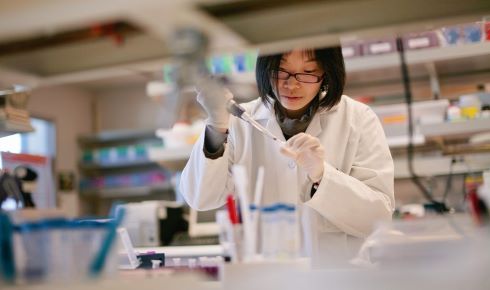Careers Q&A

21 February 2025
In the first of a series exploring bioscience careers, The Biologist’s young and early career advisory board talk to expert advisers in both academia and industry.
What is the recruitment market like in UK life sciences at the moment?
Jason Stevens-Hines (JSH):
The market has been challenging since 2022, with reduced investment, redundancies and restricted growth in many areas. But we have seen an uplift and more positivity across the second half of 2024, with investment increasing in the UK, leading to an increase in job vacancies. Currently, we sit in a fairly candidate-rich market with more people looking for work than roles advertised.
This makes the competition greater for roles, meaning as a prospective employee you need to focus on tailoring your application and standing out from the crowd.
Keeping your LinkedIn profile up to date, connecting with recruiters and networking will all be valuable ways to increase your success.
What are the differences between working in academia and industry that would be good to know before contemplating a move from one to the other?
JSH: While there are some similarities, generally the two offer distinct ways of working, with different focal points and objectives.
Academic research tends to understand the why and how, whereas research in an industry setting typically looks more at developing viable commercial solutions to a problem. This isn’t always the case, with partnered projects looking a little more like academic research, for example.
Expect to see commercial objectives and accountable timeframes set by investors or senior leaders within businesses, which are often more rigid than in academia and push decisions to be made at set times. However, there’s often a great sense of camaraderie in industry, with project teams pushing toward shared goals, as well as great personal development opportunities.
 "There’s often a great sense of camaraderie in industry, with project teams pushing toward shared goals" - Jason Stevens-Hines
"There’s often a great sense of camaraderie in industry, with project teams pushing toward shared goals" - Jason Stevens-Hines
Sarah Blackford (SB): If you want to step outside of academia with a view that you may return at some point, aim to choose a company that is research focused, possibly already partnering with academia and allowing its staff to attend conferences and publish papers. Although this is not always a prerequisite for returning to a future role in academia, it will enable you to keep abreast of the field, as well as maintaining your publication record. Try to remain attached to your academic network and even, like me, offer your services (e.g. teaching, alumni events) to your department in exchange for a visiting or honorary position.
Are there particular life science skills that are in high demand from employers at the moment – or will be in the future?
JSH: This varies from business to business, depending on the group’s technical focus and the seniority of the role, but in more entry-level positions there tends to be a focus on soft skills. Candidates who bring dynamic, agile approaches and thought processes to challenges are highly valued, as they ultimately enable innovation. Attitude and approach go a long way here!
Industry placements gained during studies can also help you stand out in a competitive entry-level space. Later in your career employers tend to look for tenured experience in a specialist subject area, with project and people leadership skills highly sought after.
SB: As well as technical expertise in particular lab techniques, such as molecular biology and genetics, skills in data analysis, bioinformatics and computational biology are in high demand. Being able to manage and interpret large data sets is highly valued across many sectors. Industry and business are much more team oriented, which is why communication skills are seen as paramount. In its ‘Future of Jobs’ report, the World Economic Forum revealed the top 10 skills for 2025 (see box below). This is great news for life scientists, who are likely to be able to demonstrate examples of all these skills.
2. Active learning and learning strategies
3. Complex problem solving
4. Critical thinking and analysis
5. Creativity, originality and initiative
6. Leadership and social influence
7. Technology use, monitoring and control
8. Technology design and programming
9. Resilience, stress tolerance and flexibility
10. Reasoning, problem solving and ideation
What are the biggest areas of employment in life science? Which are short of candidates?
JSH: The life science sector is vast. Key areas we typically deal with are biotechnology, pharmaceutics and medical device/diagnostics. In these fields, there are enhanced regulations and standards to adhere to, meaning that as well as demand for scientists, there is a need for quality assurance professionals to implement and maintain integrity and good practice, and regulatory professionals who ensure products can legally be marketed in key geographical areas. Commercially minded candidates are also sought after, such as those with a technical understanding of products and service lines, who can apply themselves to sales and account management.
The PhD-postdoc-professor pathway is becoming less appealing and there seems to be less funding for permanent roles than ever. What non-standard academic careers are available that those in research might not have thought about or know exist?
SB: There is a wide range of careers outside of academic research, including some based within universities – known as academic-related or professional service roles. I know many PhD-qualified people who have moved to the professional side of universities and research institutes (and have even reached the level of vice-chancellor).
Beyond university, you can find a plethora of careers in a multitude of different sectors that will suit you depending on your interests, skills, values and other factors. These include research, regulatory affairs, data analysis, bioengineering, communication and outreach, education technology and curriculum development, sustainability, policy and public affairs, publishing and editorial, advocacy, patent law, administration, public health, agricultural sciences, medical writing, teaching, coaching and many other careers, depending on how wedded you are to your chosen discipline.
How do you build a name for yourself as an independent researcher while working for someone else, i.e. your principal investigator (PI)?
SB: It can be difficult to diverge from your PI enough to create your own research niche. Collaboration with your PI is valuable, but ideally you will also identify and carve out specific aspects of the research that are distinctly yours. This could be a largely neglected, minority or emerging aspect within your research field that you are interested in developing as your own.
 'Soft' skills, such as communication and creativity, are increasingly sought-after in addition to experience and conventional lab skills.
'Soft' skills, such as communication and creativity, are increasingly sought-after in addition to experience and conventional lab skills.
Building relationships with other researchers in your field and beyond – by attending conferences, engaging in collaborative projects, reviewing papers and connecting with others on professional platforms – will make you more visible in your field as you start to build your reputation.
Applying for independent funding, such as postdoctoral fellowships, future leader fellowships or small grants, can also help you to gain independence and show your ability to attract resources – and can fast-track you to a leadership position.
When trying to become a PI as a postdoc you must demonstrate you can do PI tasks such as teaching, administering projects, contributing to committees, etc. It can feel like you’re unable to say no, even though you risk taking on too much. Which extra responsibilities should you accept and which should you reject?
SB: I have heard established academics say that in order to become a PI you need to be selfish. I take that to mean, more positively, that you need to be strategic in what you take on regarding the time invested vs the benefits to your career. Saying no to a request can be difficult, but saying no respectfully is better than overcommitting and underdelivering.
Consider all the tasks you are currently doing and put them in order of priority in terms of their importance to your career goals. Remember, you’ve taken on many of these tasks to gain experience and enhance your skills in these areas; if you find that you’re no longer developing from some, consider delegating them to others, who will also now benefit from the associated professional development.
The mid-to-end part of the postdoc phase is really tough to navigate. Do you do one long postdoc, multiple short postdocs or something in between? How do you know when to stick it out and when to move on?
SB: There’s no right or wrong answer here. The overarching question to ask yourself is: “Am I getting the experience, mentoring and opportunities, and developing the skills I need to achieve my career aims?” Talk to successful PIs about how and why they moved from one research group to another, what motivated them to collaborate with a particular professor and their academic mobility experiences.
In academia, you have to manage your own career to a great extent, which means thinking ahead and planning your next move maybe 12 to 18 months ahead (sometimes as soon as you start your current postdoctoral position). Make sure you’re in the driving seat of your career, not sitting in the back as a passive passenger. Don’t be afraid to be bold and to move outside your comfort zone to grow and develop your career.
More information about Sarah's work can be found on the BioScience Careers website.
Find out more about Jason's work for Michael Page
Jason Stevens-Hines is business manager (life sciences) at recruitment agency Michael Page
Sarah Blackford is a specialist academic careers consultant


